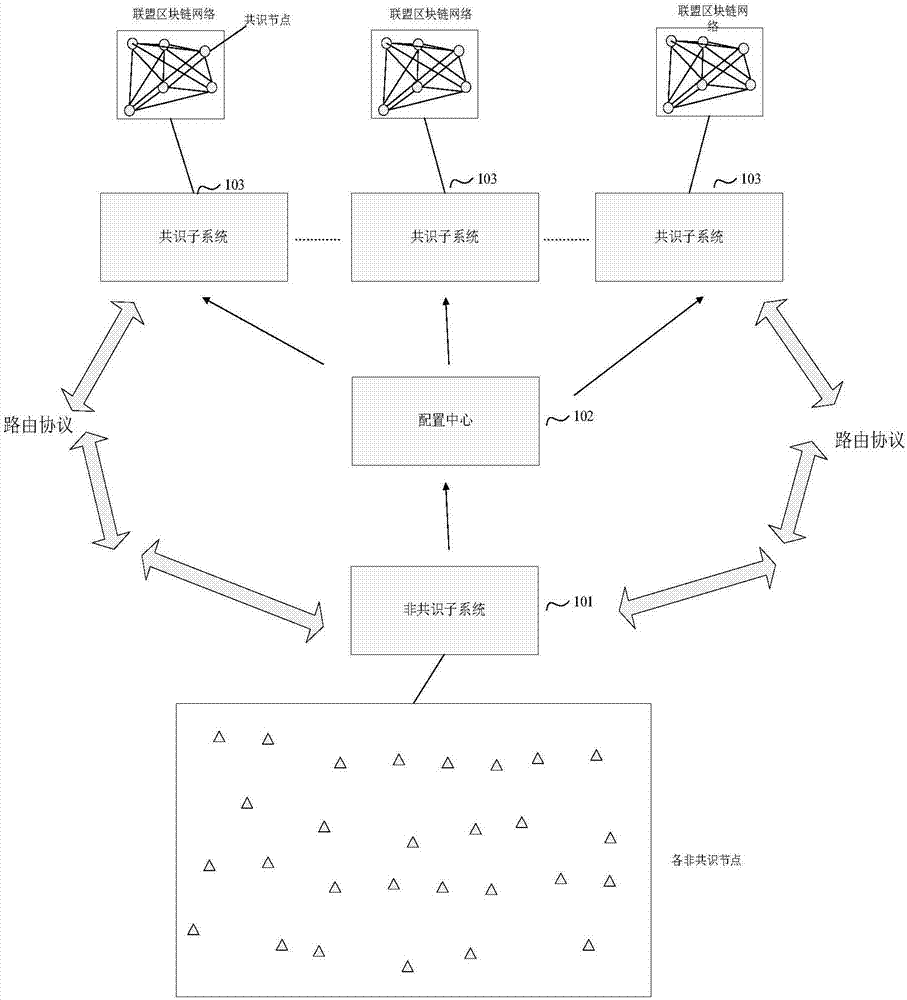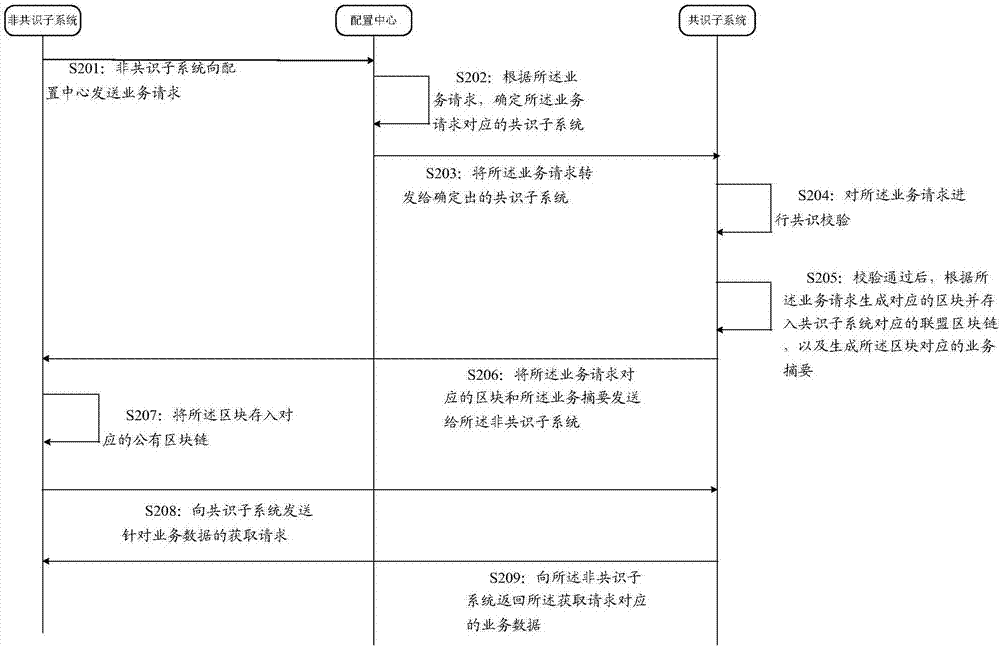Block chain system, and data storage method and apparatus
A data storage device and data storage technology, applied in transmission systems, database indexes, digital transmission systems, etc., can solve the problems of inconsistent docking protocols and low convenience, and achieve the effect of improving convenience and security.
- Summary
- Abstract
- Description
- Claims
- Application Information
AI Technical Summary
Problems solved by technology
Method used
Image
Examples
Embodiment Construction
[0042] The embodiments of the present application provide a blockchain network, data storage method and device.
[0043] In order to enable those skilled in the art to better understand the technical solutions in this application, the following will clearly and completely describe the technical solutions in the embodiments of this application with reference to the drawings in the embodiments of this application. Obviously, the described The embodiments are only a part of the embodiments of the present application, rather than all the embodiments. Based on the embodiments in this application, all other embodiments obtained by those of ordinary skill in the art without creative work should fall within the protection scope of this application.
[0044] As mentioned earlier, in practical applications, there are two main application forms of blockchain networks, namely, public blockchain networks and alliance blockchain networks. The identity of each node in the public blockchain netwo...
PUM
 Login to View More
Login to View More Abstract
Description
Claims
Application Information
 Login to View More
Login to View More - R&D
- Intellectual Property
- Life Sciences
- Materials
- Tech Scout
- Unparalleled Data Quality
- Higher Quality Content
- 60% Fewer Hallucinations
Browse by: Latest US Patents, China's latest patents, Technical Efficacy Thesaurus, Application Domain, Technology Topic, Popular Technical Reports.
© 2025 PatSnap. All rights reserved.Legal|Privacy policy|Modern Slavery Act Transparency Statement|Sitemap|About US| Contact US: help@patsnap.com



